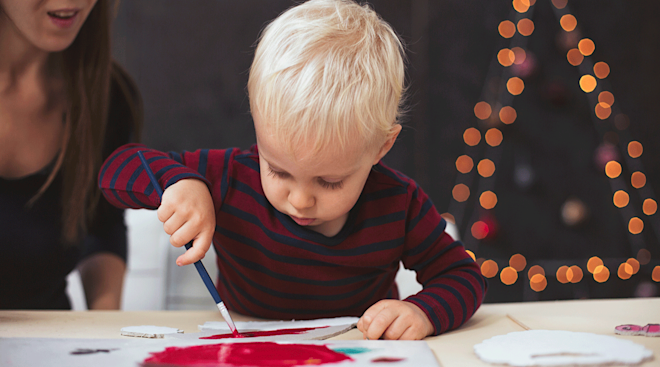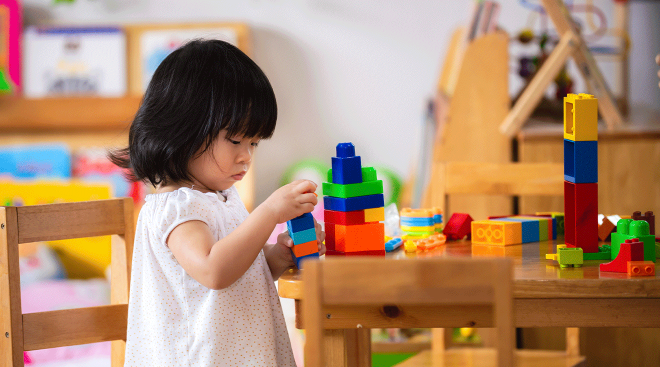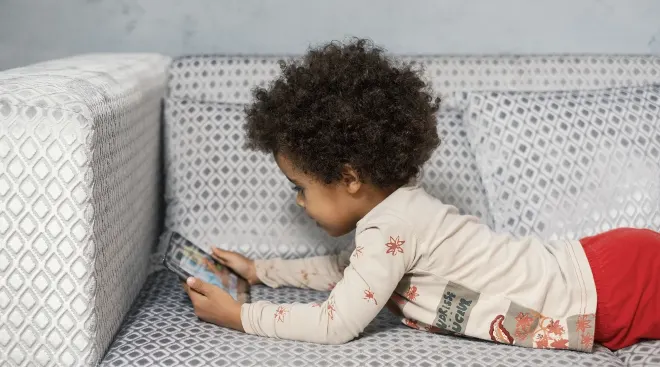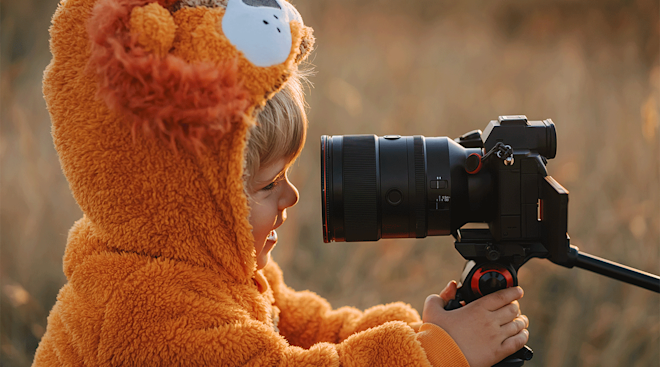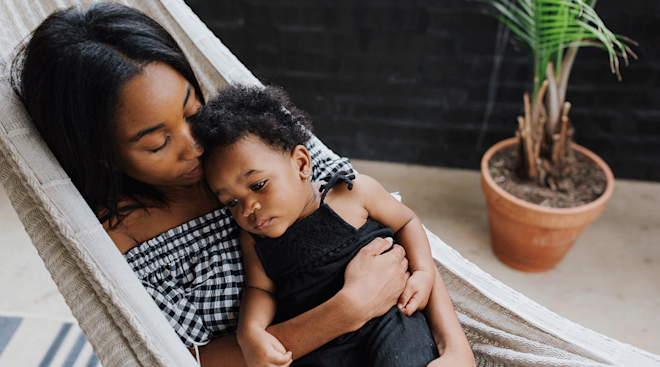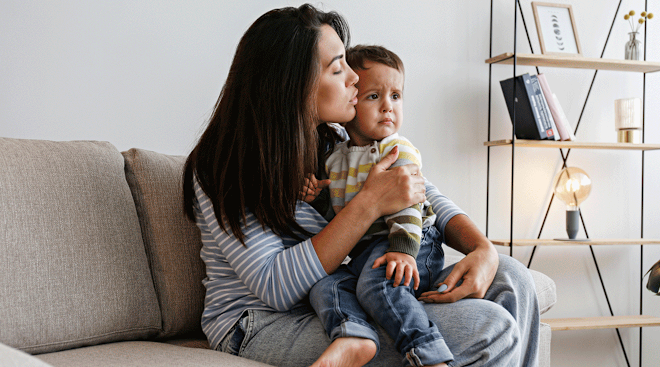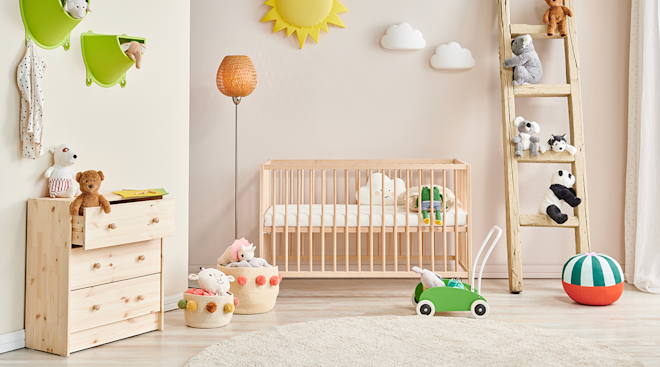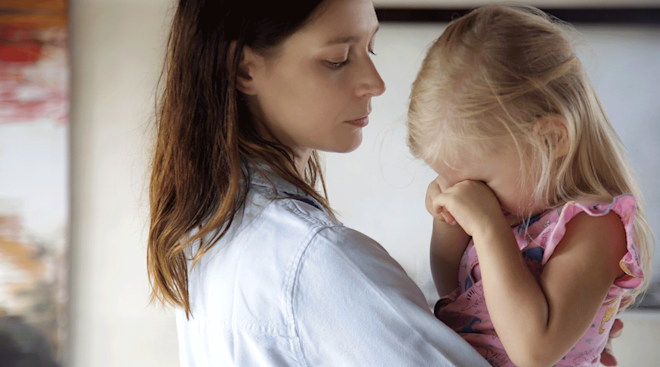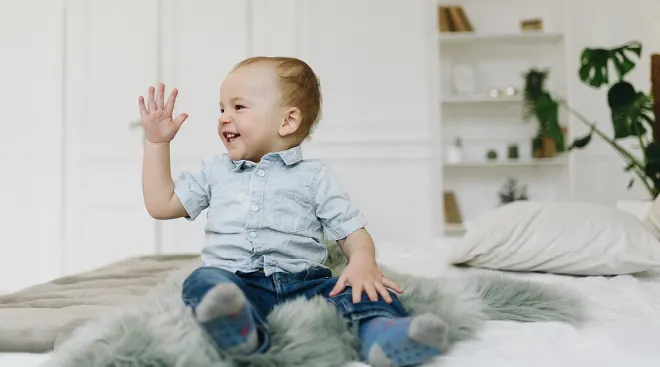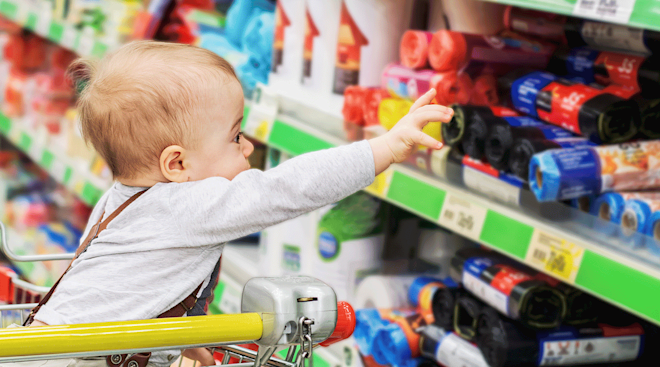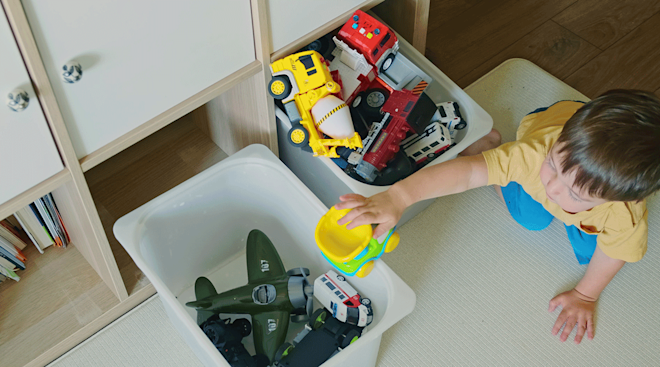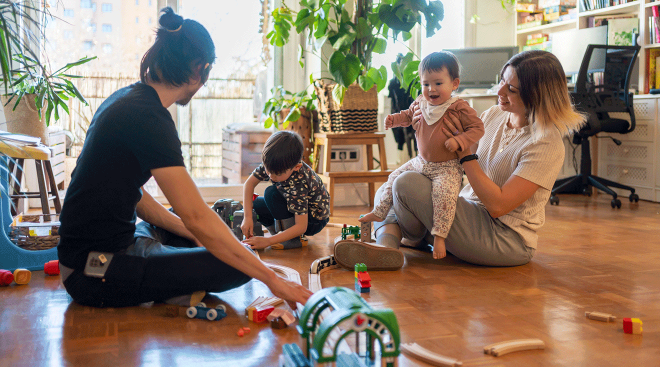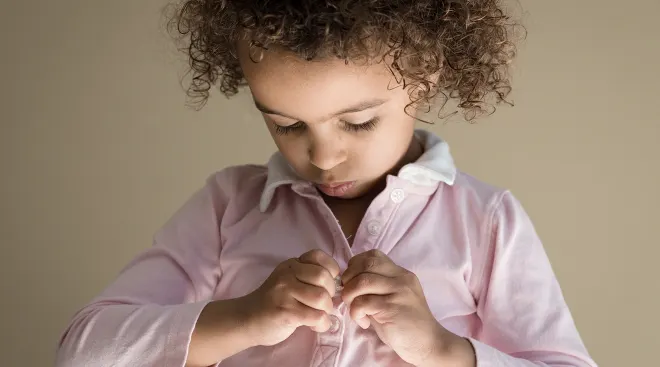Cracking the Code: What Your Toddler's Bizarre Behaviors Really Mean
Toddlers are adorable, curious creatures. But, sometimes, they’re downright strange! Always wanting to be naked? Dumping things onto the floor? Putting food up their noses? Sure, a few of these behaviors may be considered cute or funny, but others can be completely confounding—and even concerning. So why do toddlers act this way, and how should you respond? We asked the experts to weigh in on nine common but bizarre toddler behaviors; here’s what they mean—plus, tips to help your little one understand what’s appropriate (and what’s definitely not).
When we look at toddler behavior, it’s important to think about all the factors that impact development, says Cara Kiff, PhD, a child and adolescent clinical psychologist at Golden State Neuropsychology in Calabasas, California. “Toddlers are shaped by their temperament (meaning what they bring to the world) and experience (meaning the makeup of their family, parents’ lifestyles and culture),” Kiff explains. Moreover, “massive neurobiological developmental changes that occur across early childhood” play a major role.
Suffice it to say that a lot is happening, and toddlers don’t always know how to navigate new situations and regulate their emotions. They’re mastering milestones, learning new skills and trying to figure out how to respond. This phase is further complicated by a toddler’s lack of inhibition, a penchant for impulsive behavior and a developing sense of autonomy. All of these ingredients make for a complicated soup of new experiences, reactions, words and feelings. And while many things your tot does may seem odd to the naked eye, when you look at these behaviors through a developmental lens, they don’t seem so strange after all.
“At the end of the day, a lot of these behaviors are pretty normal developmentally for tots,” says Mayra Mendez, PhD, a licensed psychotherapist at Providence Saint John’s Child and Family Development Center in Santa Monica, California. “[They’re] experimenting, exploring and tapping into what’s going on in their own world—testing it out with the world outside of them.”
Toddlerhood is a stage of learning, growth and development, and verbal skills and emotional intelligence are still just beginning to blossom. Not only are toddlers constantly exploring and experimenting, but they also can’t always recognize, manage or verbally explain their emotions—so it’s no wonder those curiosities and feelings tend to manifest in some puzzling behavior.
Take heart: There are ways to suss out what’s at the root of your tot’s peculiar actions and attitudes. Here’s the scoop on what some of these bizarre behaviors may signal, and how to help your little one get through this eccentric stage. Because at the end of the day, your little one needs your guidance to help put the pieces together. “Toddlers need limits so that they can learn,” explains Mendez.
Taking clothes off or getting naked
If your toddler likes to get in the buff at inconvenient times, it may be less about being naked and more about eliminating an uncomfortable source of sensory input. “Toddlerhood is a common period of sensory sensitivity,” explains Kiff—meaning your little one may be put off by certain sounds, sensations and temperatures. They may look to decrease sensory input by removing scratchy shirts or constricting pants. Don’t you sometimes wish you could shed your too-tight bra mid-meeting? You may know better, but toddlers don’t yet have full brain development in regions that regulate inhibition, which makes them more likely to act impulsively.
What to do about it: While you don’t want to make your toddler feel ashamed of their body, you can teach them about appropriate times and places to be naked. Also, remember that—just like adults—toddlers can find certain clothes itchy or uncomfortable. “Be mindful of fabrics and clothing preferences, following [your] child’s lead and even letting toddlers select their own clothing,” suggests Kiff.
Fear of grandparents
Oma and Opa. G-ma and G-pa. Granny and Gramps. Whatever moniker your parents and in-laws take on in their role, it can be hard to handle when your kiddo suddenly seems afraid of a close family member. “It’s important to think about the way kids take in relational information about other people,” says Mendez. Starting from infancy, little ones don’t take in the meaning of a word such as “grandpa,” she says; rather, they take in a feeling associated with the person. “So let’s say they had an experience with the grandparent that was affectually off in some way—a beard that was scratchy or a perfume that was too strong… It can be hard to shake that.”
What to do about it: First, don’t assume that the family member intentionally did something to create your toddler’s fear, says Mendez. Next, understand that simply telling a toddler that “grandma is nice” won’t magically work. Fortunately, a negative connection that a toddler has with a grandparent can be repaired through new positive associations and experiences. Mendez says that modeling is also important. Be sure your toddler sees you having positive interactions with their grandparent. This will help your child start to develop a new image of this person.
Biting
Whether their teeth are directed at you or a fellow child, a biting toddler is an issue that often raises eyebrows and concern. While biting can be alarming, it’s a fairly common toddler issue—albeit a serious one that you’ll want to address, says Kiff. It tends to happen more often during the toddler years when language fluency is still developing. Your child lacks the words and know-how to effectively and efficiently communicate their needs and feels frustrated—and biting happens to be one way they can express themselves. (Ouch!)
What to do about it: “Toddlers in this situation are engrossed in the emotional mind, and the brain diverts energy from language and regulatory centers in favor of more rudimentary brain regions,” explains Kiff. For this reason, it’s important to use short, succinct phrases to get your point across. Kiff advises a four-step plan:
- Name the behavior. (“You bit his arm.”)
- Name the child’s emotion. (“I see your face is red. You’re feeling mad.”)
- Name the event that prompted the bite. ("He took your toy.”)
- Name the mistake. (“We don’t bite! No biting.”)
“[Your toddler] cannot regulate their emotional responses adequately, so we do it for them,” says Kiff. This should also be followed by a mild consequence: Briefly remove your child from the situation and, after a calming break, help them rejoin the activity.
Of course, you can react appropriately to biting incidents in the moment, but preventing them in the first place is even better. If you have a habitual biter, Kiff suggests looking for triggers that increase vulnerability for aggressive and impulsive behavior, such as a lack of sleep, hunger, overstimulation, new situations or group play that’s beyond a child’s developmental capacities. That way you can preemptively work to avoid unpleasant biting accidents.
Dumping things out
Whether it’s a bin of freshly picked-up toys or a bag of flour, toddlers seem to take pleasure in dumping things out of their containers. It’s inconvenient (for you), but it’s perfectly normal for them, says Mendez. In doing this, toddlers are working on adaptive skills (using their hands in combination with what they’re observing) while practicing the cognitive process that identifies cause and effect. Add, let’s be honest, the fact that you often fetch the toy or food that they just threw off the high chair and then give it back to them helps toddlers see this as a sort of game.
What to do about it: Give your curious kiddo direction for what’s appropriate and what’s not (dumping sand in the sandbox: yes; dumping dinner on the floor: no), and remind them that many items have a designated place. So if your tot dumps toys on the floor, let them play, but then teach them how to put things back in the box, advises Mendez.
Shoving things into holes
Food in the nose. Toys into outlets. The temptation to shove things into holes can seem hardwired into some children. “The toddler years are all about discovery and experimentation,” explains Mendez. “A toddler is still thinking that things in their hand are a part of them, so they’re trying to learn about and explore the physicalness of things and the space around them.”
This developmental concept of where things go and how things fit is also a central component to many toddler toys—think of shape sorters or simple puzzles. So, naturally, toddlers will try to put this same concept into practice with other things in the house. Of course, this can become problematic if there are potential safety hazards around.
What to do about it: You’ve covered all the outlets and childproofed every cabinet door (good job!), but kids are bound to discover other fun nooks and crannies to shove things that don’t belong. “Toddlers are not little beings to grow on their own—they require a lot of attention,” says Mendez. “So if they’re doing something that’s not safe, they need to get immediate feedback.”
The toddler years are also when kids learn what’s expected of them. “In order to teach expectations in toddlerhood, you need to have a set of rules that are understandable, predictable and consistent for the child to learn,” says Mendez. This means short phrases, simple words and clear directions. (“No keys in the outlet. Ouch!”) Don’t be surprised if you have to repeat the same expectation multiple times. Two-year-olds have some initial cognitive development to remember and apply information from past events, but research shows that this area of the brain continues to develop up until the age of 4.
Saying “no”
You probably spend a lot of time saying “no” to your toddler, so it shouldn’t come as a surprise when they decide to use the word right back! While some of this may boil down to simple repetition, more often than not, it’s about your kiddo learning how to assert their own independence, says Kiff. “Toddlers begin to understand themselves as separate and unique from others, with their own thoughts and values.” It’s a way for them to seek control (and, okay, push your buttons just a little).
What to do about it: For starters, to avoid these challenges, be mindful of how you make requests, suggests Kiff. Instead of phrasing something as a question that can be turned down, construct commands gently but assertively. (“Please pick this up.”) You can also help your toddler’s sense of autonomy by offering a limited selection of options (let them choose between carrots or cucumbers for a snack) and then respecting their decision.
Doing things over and over (and over!) again
If a chorus of “do it again!” regularly rings out in your household, you may have a toddler. From reading a favorite book forwards and backwards each night to watching Encanto for the umpteenth time to jumping off the laundry basket again and again and again, the toddler brain sees no issue with reliving joy over and over. This repetition is actually key to toddler development, explains Kiff. It gives them “structure and control,” and helps them “make sense of a confusing world in which they have little control.” What’s more, practice makes perfect, and repeating something helps children gain mastery and build confidence.
What to do about it: While having to listen to that song “one more time” may have you reaching for the noise-canceling headphones, encouraging your tot’s love of books, songs and games is worth it in the long run. According to the Early Childhood Learning & Knowledge Center, hearing and seeing words is key for vocabulary building and language development. Of course, you can also introduce new books, songs, movies, activities and games to switch things up and help your little one expand their horizons.
Repeating bad words
And just like that, your toddler dropped an F-bomb. Gulp. “Language is learned by hearing,” points out Mendez. “A 2-year-old doesn’t repeat what they haven’t heard.” And, FYI, the toddler years are ripe for rapid vocabulary acquisition. According to Mendez, when kids turn 2, they’ll generally have about 50 words, but by the end of that year, they’ll know hundreds.
While a toddler doesn’t understand what an inappropriate word means, they are able to identify the reaction it garners. So if they get a nervous giggle from adults and some shifty-eyed smiles, toddlers might be encouraged to say the word again. Likewise, if they’ve heard certain words in a moment of anger or frustration, they may internalize the word and use it when they’re feeling those strong emotions too.
What you can do: The best step is prevention, says Mendez. “Kids are going to model, so if you don’t want them to say it, don’t say it around them!” If it’s after the fact (we all make mistakes), simply correct and redirect by offering a different word they can use.
Night terrors
Waking up to a screaming, thrashing toddler is always alarming. But night terrors can be especially frightening for parents to witness. With a night terror, a child is actually still asleep and often won’t let you comfort them. They may not even recognize you, or they might seem distant and out of it—even if they look awake. ”Night terrors are a common developmental phenomenon and often occur when children are overstimulated, overtired and experience disruptions in their routine,” explains Kiff.
What you can do: According to the American Academy of Pediatrics, you shouldn’t try to wake your child during a night terror. Just make sure they can’t hurt themselves. While some night terrors can last up to 45 minutes, most episodes are short and end within a few minutes. “Night terrors often resolve with preventative measures such as structured, consistent bedtime routines. If not, parents should seek evaluation by their child’s pediatrician to rule out sleep disorders,” recommends Kiff. Stanford Medicine also advises looping in your pediatrician if you notice certain behaviors during a child’s night terrors, such as drooling, jerking or stiffening.
Please note: The Bump and the materials and information it contains are not intended to, and do not constitute, medical or other health advice or diagnosis and should not be used as such. You should always consult with a qualified physician or health professional about your specific circumstances.
Plus, more from The Bump:
Cara Kiff, PhD, is a child and adolescent clinical psychologist at Golden State Neuropsychology in Calabasas, California. She earned her doctorate degree from the University of Washington.
Mayra Mendez, PhD, is a licensed psychotherapist and program coordinator for intellectual and developmental disabilities and mental health services at Providence Saint John's Child & Family Development Center in Santa Monica, California.
Journal of Experimental Child Psychology, Two-year-olds use past memories to accomplish novel goals
Early Childhood Learning & Knowledge Center
Healthy Children (American Academy of Pediatrics), Nightmares and Night Terrors
Stanford Medicine, Nightmares and Night Terrors
Learn how we ensure the accuracy of our content through our editorial and medical review process.
Navigate forward to interact with the calendar and select a date. Press the question mark key to get the keyboard shortcuts for changing dates.


































